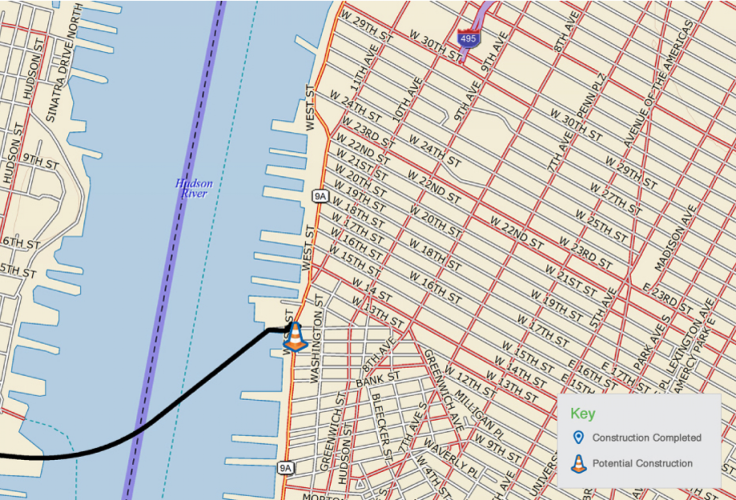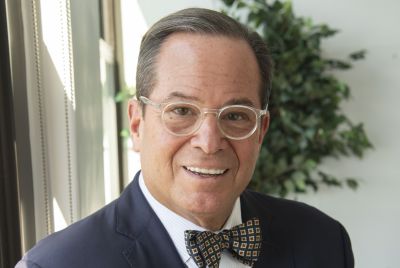Spectra Pipeline: Could Radon Exposure Or A Natural Gas Explosion Be Concerns For New York City Residents?

A little-known pipeline is stirring a fierce debate in New York City.
Spectra Energy (NYSE:SE), a Houston-based gas company, is in the process of building a 20-mile-long natural gas pipeline that will run from Staten Island, through New Jersey, under the Hudson River to Manhattan’s West Village. Construction began in July 2012 and is set to be completed in November, Marylee Hanley, director of stakeholder outreach for Spectra Energy, said.
Pipeline supporters point to the 5,200 local jobs the project creates, reduced energy costs and a reduction of greenhouse gases. Opponents cite the possibility of an explosion and exposure to radioactive gas, and they question the demand for the pipeline altogether.
“We all agree we don’t like the idea of further committing to natural gas,” said Owen Crowley, founder of environmental group Sane Energy Project. “It’s replacing one problem with another.”
The placement of such a pipeline in a dense urban setting has environmental groups, residents and elected officials concerned, especially after recent natural gas pipeline explosions in Sissonville, W. Va.; another in Goldsmith, Texas; and a deadly one in San Bruno, Calif.
“The only thing we have in common is that it’s a natural gas pipeline. That’s the only similarity,” Hanley said about Spectra’s pipeline’s association with the San Bruno blast.
Environmental groups like Sane Energy Project disagree and have taken legal action, organized demonstrations and participated in public forums to block the construction.
“We want to put a stop to it," Crowley said. "If we can’t, expose it to public inquiry.” He added that Spectra held meetings with residents, but they were sparsely attended. “There were public forums. No one knows about them.”
Spectra’s Hanley maintains the opposite. She said the company held more than 350 meetings that had “great attendance” and pointed to the legal notices and ads in local newspapers to inform residents of upcoming forums.
Environmental groups have been vocal about their two major concerns about the pipeline: exposure to radon gas and the possibility of a large explosion.
In a YouTube video opposing the project, Occupy the Pipeline, a branch of Occupy Wall Street, mentioned that the gas will be extracted from the Marcellus Formation, an area of shale gas extending across Pennsylvania, West Virginia, New York, Ohio and Maryland -- and known to contain radioactive radon gas, according to a study conducted by the U.S. Geological Survey.
Hydraulic fracturing, or hydrofracking, releases natural gas by pumping a fluid and propping material down a well to create cracks in the rock to release the natural gas. Proponents of hydrofracking point to economic benefits such as job creation and environmental ones like reduction of air pollution and greenhouse gases. Opponents say hydraulic fracturing can lead to groundwater contamination, risks to air quality and a host of health problems.
Geologists estimate that Marcellus shale may contain up to 489 trillion cubic feet of natural gas -- making it the second largest unconventional natural gas field in the world next to one in Iran. Although this supply of gas has been known about for some time, the depth and tightness of the shale made it hard to extract. In 2008, triggered by developments in hydraulic fracturing technology, higher natural gas prices and the success of a similar shale formation in Texas, extraction became a viable option, and the region experienced a shale boom.
According to Spectra Energy, the Marcellus shale is one of many gas sources for the pipeline.
“The gas in the pipeline can come from five sources: The Gulf of Mexico, Pennsylvania, the Marcellus Formation, the Rocky Mountains and offshore Nova Scotia,” Hanley said.
The Federal Energy Regulatory Commission (FERC), which has jurisdiction over the project, supports this statement.
In its May 2012 report approving the pipeline’s construction, FERC acknowledged the radon concern by stating that the gas will be “commingled with multiple gas streams … thereby diluting radon concentrations in any one source of supply.”
Spectra CEO Greg Ebel said the company has investigated the radon issue extensively.
“We’re not in the Exploration and Production business, we’re the UPS, if you will, of natural gas -- the shipping of the stuff,” Ebel said on CNBC’s Mad Money. “We look at these issues, we look at them seriously. The EPA and Department of Energy has said that there is no health risk related to radon gas but we went and got a third party to look at that, looking at Marcellus gas -- [they got the] same findings as the EPA and U.S. Department of Energy.”
Once the pipeline enters Manhattan, it will connect with the Consolidated Edison (NYSE:ED) network at West Street, by the Gansevoort Peninsula.
Residents from the surrounding Chelsea neighborhood have voiced their concerns over the safety of the pipeline, pointing to the century-old gas distribution lines beneath their homes. ConEd maintains the area’s distribution system is 10 years old, but residents say the gas company is a constant figure in their lives, fixing leaks and other problems associated with the old underground infrastructure.
“There’s not one week of the month that we do not have a ConEd truck on my block," Deley Gazinelli, a Chelsea resident since 1987, told DNAinfo.com.
Like the environmental groups, residents point to the risk of a large explosion and look to a 2010 San Bruno, Calif., blast as a warning.
The explosion in the San Francisco suburb created a 72-foot-wide crater, destroyed 38 homes and killed eight people. That pipeline was built in 1956 and, according to the National Transportation Safety Board, the deadly explosion was caused by inadequate maintenance and quality control.
Spectra said its pipeline will exceed the minimum Department of Transportation safety requirements. The pipeline will have a safety factor of 2.5, unlike most building and bridges, which are 1.5 or 2. For more than half of the pipeline’s route, the company will use thicker-walled pipe than DOT requires. The entire pipeline will be buried below ground, Hanley said.
“It will be one of the safest in North America,” Hanley said about the estimated $850 million pipeline.
Politicians on both sides of the Hudson River have weighed in on the project.
Jersey City Mayor Jerramiah Healy strongly opposes the pipeline.
“There is nothing green about this report that essentially green-lights this unprecedented, dangerous gas line,” he said after the project was approved by FERC. “There is no doubt the proposed line could imperil invaluable natural habitats, precious and diverse ecosystems, billions of dollars in economic infrastructure, and the more than a quarter million residents of Jersey City.”
New York City Mayor Michael R. Bloomberg supports the pipeline’s construction and hydrofracking in general, but he sees faults in the growing industry.
“The rapid expansion of fracking has invited legitimate concerns about its impact on water, air and climate -- concerns that the industry has attempted to gloss over,” Bloomberg wrote in an op-ed piece for the Washington Post. He pointed to the need to create “common-sense regulations that will protect the environment.” According to Bloomberg, if done properly, natural gas will have a better environmental impact than coal.
Crowley’s group sees a solution in renewable energy like solar power. He said it’s the ideal solution for New York City, which would be the perfect market to pioneer an alternative way of producing power.
A recent study published in Energy Policy helps prove his point, Crowley said. The proposed plan found that converting all of New York state to renewable energy would stabilize energy prices, create more jobs and reduce pollution costs.
“If New York takes a stand and creates a market for sustainable electricity, you can be sure electric companies will be lining up,” Crowley said.
© Copyright IBTimes 2024. All rights reserved.






















